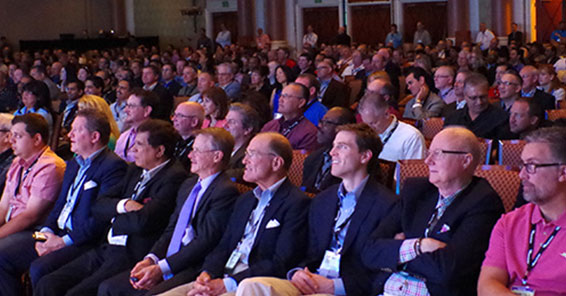Gen X Can Save the Franchise Restaurant Industry

There's a strange, almost cult-like behavior that's gripped modern marketing: the persistent, breathless chase of Gen Z. Agencies pitch TikTok-first strategies like gospel. Brand decks are littered with emojis, slang, and the latest viral challenge. All of it is aimed at capturing the elusive attention of the youngest cohort with the lowest disposable income.
Let me be blunt: It's absurd.
I've spent decades in boardrooms convincing brands to think strategically, not reactively. And yet here we are, as an industry, gleefully throwing billions in ad dollars at an audience still figuring out how to split rent with four roommates. Meanwhile, Gen X and Boomers (the ones who actually have the money) are sitting on the sidelines, barely acknowledged by the brands they've supported for decades.
This isn't just a missed opportunity. It's malpractice.
Let's talk numbers. According to the Federal Reserve, Americans aged 50 and up control roughly 70% of the country's wealth. Gen X alone is entering its peak earning years, and Boomers are the richest generation in history. Together, they wield trillions in spending power across travel, home improvement, health, technology, fashion, you name it.
Compare that to Gen Z, many of whom are still students or in their first jobs. Yes, they're culturally influential. But influence without purchasing power doesn't pay the bills or move the needle on quarterly sales. Likes and shares are great, but conversions still keep the lights on.
So why the obsession?
Some of it is trend-chasing. It's sexier to pitch a campaign that might go viral on TikTok than one that resonates quietly, but profitably, with a 58-year-old empty nester looking to redesign her kitchen. Marketers, particularly younger ones, tend to create for themselves. They relate to Gen Z because they are Gen Z or close to it. That makes it easy to fall into the trap of designing brands for youth while ignoring the customers with credit cards that don't get declined.
Let's be honest: Ageism plays a role. Our industry worships youth. "Old" is still treated like a dirty word in creative reviews. But in doing so, we've lost touch with the nuanced, diverse, and crucially profitable realities of older consumers.
This isn't about abandoning younger audiences. It's about rebalancing. You can still build brand affinity with Gen Z while crafting campaigns that speak meaningfully to Gen X and Boomers. The best marketers don't choose one or the other; they prioritize based on real ROI, not cultural hype.
Take restaurants, for instance. Restaurant brands seem fixated on chasing TikTok virality—burger flips in slow motion, neon cocktails, food challenges. But guess who's actually dining out consistently and spending big? It's not the kids splitting fries after class
Gen X and Boomers are the reliable patrons, booking weekday lunches with friends and clients, weekend date nights, and large family gatherings. They order wine. They tip generously. They care about service and ambience more than whether your menu went viral last week. And they're coming back again and again.
It's not that these audiences are against innovation and change; they just don't want to feel like an afterthought.
The smartest restaurant groups are pivoting. They're bringing back loyalty programs, emphasizing comfort and quality, and creating menus for palates that know the difference between good and gimmicky. If you're still focused on chasing Gen Z clout, you're missing the generations that actually cover the bill.
Brent Rivard is CEO and founder of Geezer.
Share this Feature
Recommended Reading:
| ADVERTISE | SPONSORED CONTENT |
FRANCHISE TOPICS
- Multi-Unit Franchising
- Get Started in Franchising
- Franchise Growth
- Franchise Operations
- Open New Units
- Franchise Leadership
- Franchise Marketing
- Technology
- Franchise Law
- Franchise Awards
- Franchise Rankings
- Franchise Trends
- Franchise Development
- Featured Franchise Stories
| ADVERTISE | SPONSORED CONTENT |

$100,000
$225,000





 The multi-unit franchise opportunities listed above are not related to or endorsed by Multi-Unit Franchisee or Franchise Update Media Group. We are not engaged in, supporting, or endorsing any specific franchise, business opportunity, company or individual. No statement in this site is to be construed as a recommendation. We encourage prospective franchise buyers to perform extensive due diligence when considering a franchise opportunity.
The multi-unit franchise opportunities listed above are not related to or endorsed by Multi-Unit Franchisee or Franchise Update Media Group. We are not engaged in, supporting, or endorsing any specific franchise, business opportunity, company or individual. No statement in this site is to be construed as a recommendation. We encourage prospective franchise buyers to perform extensive due diligence when considering a franchise opportunity.